
|
|
CULTURAL AND WILD PLANTS
Fennel ordinary (fennel vegetable). Legends, myths, symbolism, description, cultivation, methods of application
Directory / Cultivated and wild plants Content
Common Fennel (Vegetable Fennel), Foeniculum vulgare. Photos of the plant, basic scientific information, legends, myths, symbolism
Basic scientific information, legends, myths, symbolism Sort by: Fennel (Foeniculum) Family: Umbelliferae (Apiaceae) Origin: The homeland of fennel is the Mediterranean, as well as the western and southern parts of Asia and North Africa. Area: Common fennel is common in Europe, Asia, Africa, Australia, America. Chemical composition: Fennel contains essential oil, anethole, fenchon, limonene, fenheline, alpha-pinene, camphene, carvone, myrcine, alpha-thujone, linalol, methylchavicol, dihydroanethole, estrategol, saponins and other biologically active substances. Economic value: Fennel is used in the food industry as a spice and flavor, as well as in cooking for soups, sauces, salads and various dishes. Fennel is also prescribed medicinally as a remedy for improving digestion, relieving bloating, reducing the symptoms of colds and coughs, as well as improving sleep and relieving stress. In addition, fennel is used in the perfume and cosmetic industries. Legends, myths, symbolism: In Greek mythology, fennel was considered a symbol of strength and victory. Hercules used fennel as his weapon against the giant Alcaeus. It was believed that fennel helps to gain strength and endurance. In Roman mythology, fennel was associated with the fertility goddess Seres. It was believed that fennel helps with pregnancy and childbirth. In folk customs, fennel was used to expel evil spirits and protect against harmful influences. The plant was believed to help provide protection from the evil eye and negative energy.
Common Fennel (Vegetable Fennel), Foeniculum vulgare. Description, illustrations of the plant Fennel ordinary, Foeniculum vulgare. Description of the plant, area, cultivation, application
A biennial or perennial herbaceous plant of the Apiaceae family. The stem is erect, branched, up to 2 m high. The root is taproot, thick, fusiform. The leaves are alternate, multi-pinnate, dark green. The flowers are small, yellow, cross-pollinated. The fruit is an oblong two-seeded plant, up to 14 mm long, 3-4 mm wide. Fennel is native to the Mediterranean. It has been known in culture since the Middle Ages. It is cultivated in small areas in many European countries, China, Japan, India, Northeast Africa, and the USA. Two types of fennel are propagated - ordinary and vegetable. Vegetable fennel is grown in Italy. The fleshy thickening is used in food. Fennel ordinary propagated by seeds. It is cold-resistant, but it must be sown when the air temperature reaches 6-10 ° C. Demanding on the soil. The best for its cultivation are fertile calcareous-argillaceous or chernozem loams. The plant blooms already in the first year, but the most abundant flowering and fruiting usually occurs in the second year. The leaves and fruits of fennel have a pleasant smell and a sweetish taste. Mature fruits contain 5-7% essential oil. Its content in the aerial parts of plants in the phase of milky-wax ripeness of the seeds of the central umbel of inflorescences is almost twice as low. The essential oil is a colorless or slightly yellowish liquid with a characteristic odor, tastes bitter at first, then sweet. It contains anethole, anisic aldehyde, anisic acid, etc. The essential oil is used in the food industry for flavoring teas, drinks, and also in medicine - it is added to the licorice elixir, which is used for coughs. In addition to the essential oil, the fruits contain fatty oil, which is a good substitute for cocoa butter. Ascorbic acid, carotene, vitamins of group B, E.K. were found in fennel. The spicy and aromatic properties of fennel have long been known. Outwardly, it resembles dill, and to taste - anise. Its fresh leaves are used in salads, side dishes and seasonings for soups, meat, fish and vegetable dishes, when pickling vegetables. The fruits and essential oil of fennel are used in the food industry, for flavoring confectionery, tea, drinks, marinades, and in bakery. Sprinkle ground fennel on spit-roasted meat. Its boiled roots in pure form are used for food, and the waste is fed to livestock. Fennel has been used medicinally since ancient times. Ripe fruits are used as a laxative, are part of gastric teas, and are used to prepare dill water. Fennel stimulates appetite, improves digestion, and has a mild diuretic effect.
Cultivation. Fennel ordinary propagated by seeds. Its predecessors can be any leguminous crops, potatoes. The soil in the area after the predecessor is loosened to a depth of 5-6 cm. After the mass germination of weeds, it is dug up to a depth of 25-30 cm, at the same time 2-3 kg of manure or humus is applied per 1 m2. In the spring, the ground is carefully harrowed and seeds are sown in holes to a depth of 2,5-3 cm. The distance between rows is 20-25 cm. Shoots appear after 20 days. After the emergence of seedlings and 2-3 true leaves, the first weeding, loosening and, if necessary, thinning of the plants are carried out, leaving a distance of 10-20 cm between them. At the same time, mineral fertilizers are applied: 10-20 g of ammonium nitrate or ammonium sulfate, 20-25 g of superphosphate, 10-12 g of potassium salt per 1 m2. During the entire growing season, row-spacings are regularly loosened and mineral top dressing is repeated 2-3 times. In the second year of life, plant regrowth begins in early April, budding - at the beginning of the third decade of June, flowering - in July - August, Seeds ripen in September. Good seeds ripen in warm, dry summers. For the winter, crops must be covered, since if there is no or little snow cover, and the frosts are severe, they can freeze significantly. For daily use, the greens of a young plant are used. For the purpose of long-term storage, the greens are dried in the shade under a canopy or in a well-ventilated area, spreading it out in a thin layer. When pickling cucumbers and other vegetables, you can use both fresh and dried herbs. Dry greens are packed in tightly closed containers. Fennel fruits do not all ripen at the same time. They appear on the same plant at different stages of its development. Therefore, they should be collected gradually, cutting out their mature parts from flower umbrellas. The collected seeds must be dried on a cloth or a thick mesh at a temperature not exceeding 33 ° C. Then dry umbrellas are threshed and the seeds are stored in a tight package in a cool place. Authors: Yurchenko L.A., Vasilkevich S.I. Vegetable fennel, Foeniculum vulgare Mill. Botanical description, history of origin, nutritional value, cultivation, use in cooking, medicine, industry
Perennial (rarely one- or two-year-old) herbaceous plant up to 2 m high. Stem erect, rounded, hollow, thin, branched. Leaves alternate, large, repeatedly pinnatisected, vaginal; lower petiolate, middle and upper almost sessile. The flowers are small, yellow or white, collected in a complex umbrella. The fruit is an oblong two-seeded greenish-brown color. Blooms in July - August. Fennel is native to the Mediterranean. Introduced into culture in ancient times. It was known to the Romans, Greeks, Egyptians, Indians and Chinese as a spice and medicine. In the Middle Ages, fennel was brought to Central Europe. In Eastern Europe, fennel was tried to be cultivated in the middle of the XNUMXth century. Common fennel is cultivated, as there are no breeding vegetable varieties yet. It is also found in the wild. Fennel is known as a valuable spicy and medicinal plant. It is also called pharmacy dill. Cultivated in order to obtain young greens and seeds. Fennel is a heat and light-loving, drought-resistant plant, but it requires watering from sowing to maturation of the rosette. It grows best on fertile calcareous-clay soils and chernozems. Responsive to fertilizers. Fennel can be sown in the ground before winter or early spring at an air temperature of 6-10 ° C. The distance between plants and rows is 20-30 cm, the planting depth is 10-20 cm. The crops are rolled. The first shoots appear in 15-20 days. Weeding is carried out when two or three true leaves appear, and in the phase of three or four, they are thinned out and spud. During the growing season, the soil is kept in a loose and weed-free state, if necessary, the plant is watered three to four times and fed with fertilizers. The fruits do not ripen at the same time, so the harvesting is carried out selectively. After threshing, the seeds are immediately dried in a shaded place. Fennel seeds contain a large amount of essential oil, consisting of 60% of anethole - a substance that gives it a sweetish taste, slightly pungent and characteristic anise smell. Vitamin C and carotene, fatty oil were found in the seeds. The leaves also contain essential oil, but in a smaller amount. Their main value is that they contain important for the body vitamins C, groups B, E, K, rutin, carotene and minerals. For a long time, this plant has been used in folk medicine as a decoction for pain in the intestines, coughs and insomnia. An aqueous infusion of seeds stimulates appetite, improves digestion, reduces gastrointestinal colic, and increases lactation in nursing mothers. Fennel is used as a diuretic for kidney stones, and also as an antiseptic. Fennel is also used in scientific medicine. Its seeds are part of medicinal collections - (usually with licorice root), which are used as an expectorant for bronchitis, diseases of the lungs and upper respiratory tract. Fennel essential oil is used in the medical industry to improve the taste and flavor of medicines, the manufacture of dill water, which has a healing effect on bloating in infants. The aroma of fennel is stronger than that of dill. It is eaten fresh and dried. Salads, seasonings for meat and vegetable dishes are prepared from fresh leaves. Seeds are used as a spice for flavoring confectionery and bakery products, drinks. Use fennel when pickling cucumbers and tomatoes. Authors: Kretsu L.G., Domashenko L.G., Sokolov M.D.
Common fennel, Foeniculum vulgare Mill. Botanical description, distribution, chemical composition, features of use
Celery family - Apiaceae. Perennial or biennial plant up to 200 cm high, glabrous, bluish-green, with fusiform rhizome. The leaves are dissected into narrow-linear lobes. The flowers are yellow. The fruit is oblong-concave with a spicy smell and sweetish taste, 5-10 mm long and 2-3 mm wide. Blooms in July - August. Grows on dry slopes along roads and near dwellings. It grows wild in North Africa (Algeria, Egypt, Libya, Morocco, Tunisia), Western (Italy, France, England, Spain, Portugal) and South-Eastern Europe (Albania, Yugoslavia, Bulgaria, Greece), Central and Western Asia , New Zealand, North, Central and South America. The fruits contain 4-6,5% essential oil obtained by steam distillation. It contains about 60% anethole, up to 12% fenchon, methylchavicol, alpha-pinene, camphene, dipentene, alpha-phellandrene, anisic aldehyde, anisic acid, etc. The essential oil is a colorless or slightly yellowish liquid with a characteristic smell of fennel, tasting first bitter and then sweet. The fruits also contain up to 12-18% fatty oil, consisting of petroselinic (60%), oleic (22), linoleic (14) and palmitonic (4%) acids. Fatty fennel oil can be a substitute for cocoa butter. The herb contains quercetin, fenicularin, which is a flavone derivative, and a small amount of essential oil. Fennel fruits and essential oil are used in cooking as a spicy seasoning for food. Fennel greens have a very pleasant, slightly sweet refreshing taste. It is consumed raw as a dessert, added to a salad, stewed with butter and a seasoning of flour and broth. Fennel is consumed by the peoples of the Mediterranean countries as a vegetable. In the Caucasus, the leaves are also used as a spice in the preparation of national dishes. Juicy leaves and young umbrellas canned. The stems and young umbrellas are used for salting vegetables, the fruits are used in baking. As a medicine, fennel has been used since ancient times by Hippocrates and Asclepiades (as a diuretic), Dioscorides and Pliny (as an eye remedy), Avicenna (as an expectorant). Fennel oil is used for pain in the digestive tract (a few drops on refined sugar). Most often, fennel essential oil serves as a raw material for the isolation of anethole. From the fruits of fennel, the drug "Anetin" is obtained - the amount of active ingredients. It has an antispasmodic effect, especially in relation to the smooth muscles of the intestine, to a lesser extent - in relation to the coronary vessels. In therapeutic practice, it is used for chronic spastic colitis, for spasms of the abdominal organs, and for chronic coronary insufficiency. The essential oil is part of the licorice elixir, used as an antitussive. Fennel fruits are part of the laxative, wind-, choleretic, chest and sedative collections. The essential oil is used as a fragrant oil in perfumery. After distillation of the essential oil from the fennel fruit, a fatty oil is obtained, which is used in technology. Waste after the extraction of fatty oil is fed to livestock. Authors: Dudchenko L.G., Kozyakov A.S., Krivenko V.V.
Fennel, Foeniculum vulgare Mill. Classification, synonyms, botanical description, nutritional value, cultivation
Synonyms: F. capillaceum Gilib., F. officinale All., F. Foeniculum Karsten., Anethum Foeniculum L., A. rupestre Salisb., Liguslicum Foeniculum Crantz., Meum Foeniculum Spreng., Ozodia foeniculacea Wight et Arn., Selinum Foeniculum EHL Krause. Names: German Fenchel; Az. razyan; arm. khorom-sumit; cargo, ceretso; Goal. venkel; dates fennikel; Swede, fenkol; English fennel; fr. fenouit; it. finocchia; Spanish hinojo; port, funcho; hung. capor; Slovenian kopres, komarsek; Serb, komorac; Czech fenykl; Polish koper wloski, koper wloskowaty, koper, fankul. Perennial or biennial plant. The stem is smooth, round in cross section, covered with a bluish bloom, 1-2 m high, branching. The leaves are strongly dissected into long, narrow, filiform segments, at the base passing into a groove-like petiole. The flowers are small; corolla yellow; flowers in 10-12 ray umbrellas, numerous. The fruits are two-seeded, when ripe, easily split into two parts, grayish-green in color, sweetish, spicy, with a pleasant and strong smell; the shape of the fruit is oblong-oval; its surface is covered with clearly visible ribs. There are two forms (more precisely, two groups of forms) of fennel: ordinary and Italian, or tender. The latter differs in that the leaf petioles of the fennel of this group form thick swellings at the base, which are spud for bleaching. Fennel of this group is especially widespread in Italy and is consumed fresh. In the Caucasus, in the Crimea, common fennel is common, the leaf petioles of which do not have swelling. It is eaten as a spicy seasoning (in soups, salads, meat dishes) and as a spice when pickling cucumbers. Young bleached shoots of fennel are eaten boiled; the roots are also edible boiled and mashed. A fragrant essential oil is extracted from the seeds. A number of varieties of common fennel are known. For example, in Pepper, the fruits have a burning peppery taste; leaf tips are linear; Ogorodny has pinnate leaves, its height is up to 2 m; Bologna has thin, hairy leaf tips and larger fruits than other varieties; Grebnevoy has the best leaves for cutting. Fennel should be sown on fertile and well-cultivated soils. The best results are obtained when fennel is sown in the second year after applying a large (60 tons) dose of manure. Mineral fertilizers are recommended to be applied in such quantities: superphosphate - at least 2 centners, potassium salt - 1 centner, ammonium nitrate - 2 centners. The latter should also be applied as top dressing in the first period of the plant's life (before flowering). Fennel seeds remain viable for 2-3 years; the seeding rate varies from 8 to 16 kg/ha, depending on the method of sowing and partly on the variety. Sowing is done either row or band, with distances of 20-25 cm between rows, 50-60 cm between bands, in rows of 10-20 cm. Italian fennel requires a slightly more spacious placement. The seeding depth is 1,5-2 cm. Sometimes fennel is also propagated vegetatively - by dividing the bush. Italian fennel is sown - at different times, first in greenhouses, and then in open ground, in order to have a product at different times. Ordinary fennel is sown either in spring or late summer. Since plants do not always winter safely in the ground, in the fall they should be covered with manure or humus. This achieves at the same time the fertilization of the plantation. In one place, fennel is rarely sown for more than three years. For seed purposes roots; fennel can be stored in ordinary storage, falling asleep; sand. In spring, they are planted in a square or square-nesting way at a distance of 60x60 cm, one or two plants per nest, formed by the lines of intersection of the marker. Author: Ipatiev A.N.
Common fennel, Foeniculum vulgare Mill. Botanical description, habitat and habitats, chemical composition, use in medicine and industry
Perennial or biennial herbaceous plant 90-200 cm tall, Umbeliferae family. The leaves are thrice-, four-pinnate with long filiform segments, the flowers are yellow, small, located on the tops of the stems in the form of flat complex umbrellas, the fruit is an oblong naked greenish-brown two-seeded seed, up to 8 mm long, up to 3 mm wide. Flowering in July-August, fruiting in September. Range and habitats. It grows wild in North Africa (Algeria, Egypt, Libya, Morocco, Tunisia), Western (Italy, France, England, Spain, Portugal) and South-Eastern Europe (Albania, Yugoslavia, Bulgaria, Greece), Central and Western Asia , New Zealand, North, Central and South America, found in the steppe regions of the Caucasus. It grows on dry rocky slopes, along ditches, grassy places, as well as near roads and housing, in weedy places. Cultivated in many countries. Chemical composition. The plant has a high content of essential oils. Their fruits contain up to 6,5%, and in leaves - up to 0,5%. Fennel essential oil has a characteristic aroma and a spicy-sweet taste. It contains: anethole, fenchon, methylchavicol, alpha-pinene, alpha-phellandrene, cineol, limonene, terpinolene, citral, bornylacetate, camphor and other substances. The fruits also contain up to 12-18% fatty oils, consisting of petroselinic (60%), oleic (22), linoleic (14) and palmitonic (4%) acids. The grass of the plant, in addition, contains a large amount of flavonoids, glycosides, ascorbic acid, carotene, B vitamins and various minerals.
Application in medicine. Fennel fruits and its preparations are used for violations of the motor function of the intestine, with spastic colitis, flatulence. For bronchitis, fennel preparations are prescribed as a disinfectant, anti-inflammatory and expectorant. Sometimes fennel fruits are used as an antispasmodic for kidney stones and gallstones. Especially often, fennel fruits are prescribed in children's practice in the form of dill water. Fennel fruits are used as an infusion: pour 1-2 teaspoons of the fruit with a glass of boiling water, leave for 2 hours, take 1 tablespoon every 2 hours during the day 15 minutes before meals. Dill water (Aqua Foeniculi). An aqueous solution of dill oil 1:1000, a colorless transparent or slightly cloudy liquid with a sweetish taste, aromatic smell. Assign inside 1 teaspoon or 1 tablespoon for flatulence, usually in pediatric practice. Fennel oil (Oleum Foeniculi). Transparent, easily mobile, colorless or yellowish liquid with an anise smell, bitter-spicy taste. Apply 3-5 drops on sugar for pain in the intestines. Other uses. The essential oil is used as a fragrant oil in perfumery. After distillation of the essential oil from the fennel fruit, a fatty oil is obtained, which is used in technology. Waste after the extraction of fatty oil is fed to animals. Fennel fruits and essential oil are used in cooking as a spicy seasoning for food. Fennel greens have a very pleasant, slightly sweet refreshing taste. It is consumed raw as a dessert, added to a salad, stewed with butter and a seasoning of flour and broth. Among the peoples of the Mediterranean countries, fennel is used as a vegetable. In the Caucasus, the leaves are also used as a spice in the preparation of national dishes. Juicy leaves and young umbrellas canned. The stems and young umbrellas are used for salting vegetables, the fruits are used in baking. Authors: Turova A.D., Sapozhnikova E.N.
Common Fennel (Vegetable Fennel), Foeniculum vulgare. Recipes for use in traditional medicine and cosmetology
Ethnoscience:
Cosmetology:
Attention! Before use, consult with a specialist!
Common Fennel (Vegetable Fennel), Foeniculum vulgare. Tips for growing, harvesting and storing
Common fennel, also known as vegetable fennel, is a popular vegetable used in cooking and medicine. Tips for growing, harvesting and storing: Cultivation:
Workpiece:
Storage:
Fennel is a tasty and healthy vegetable that can be used in a variety of dishes.
▪ Honeysuckle forest (real honeysuckle, common honeysuckle) ▪ Play the game "Guess the plant from the picture"
Energy from space for Starship
08.05.2024 New method for creating powerful batteries
08.05.2024 Alcohol content of warm beer
07.05.2024
▪ New version of ASTRO 25 trunking system ▪ Protein edits other proteins ▪ Words and their emotional coloring
▪ site section Electrician's tool. Article selection ▪ box article. Popular expression ▪ article Where are the most wild camels? Detailed answer ▪ Chinese cinnamon article. Legends, cultivation, methods of application
Home page | Library | Articles | Website map | Site Reviews www.diagram.com.ua |






 Arabic
Arabic Bengali
Bengali Chinese
Chinese English
English French
French German
German Hebrew
Hebrew Hindi
Hindi Italian
Italian Japanese
Japanese Korean
Korean Malay
Malay Polish
Polish Portuguese
Portuguese Spanish
Spanish Turkish
Turkish Ukrainian
Ukrainian Vietnamese
Vietnamese

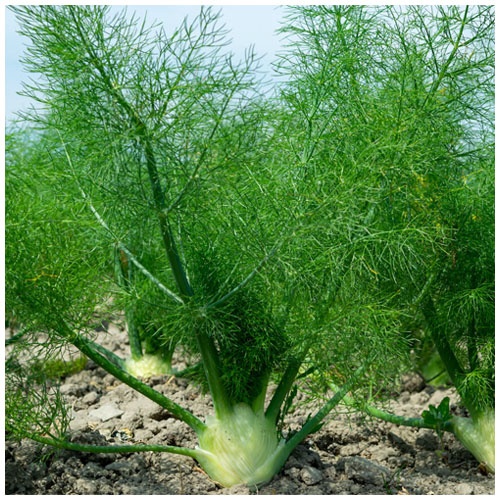
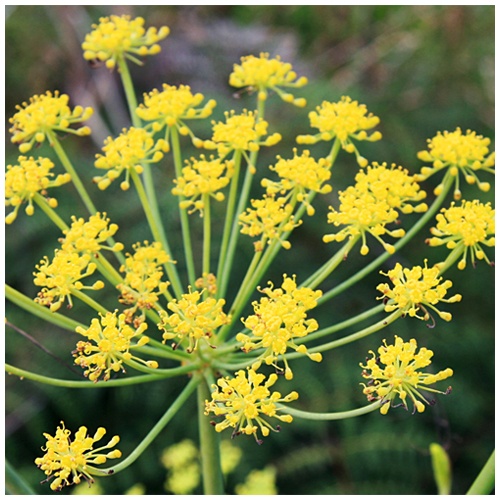


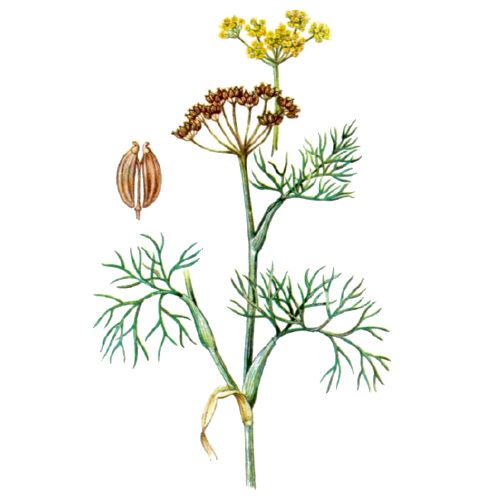
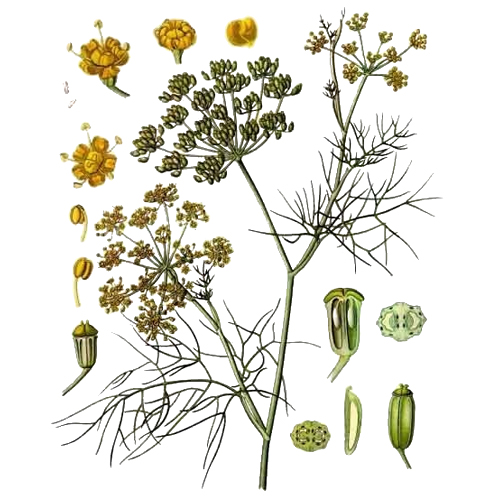
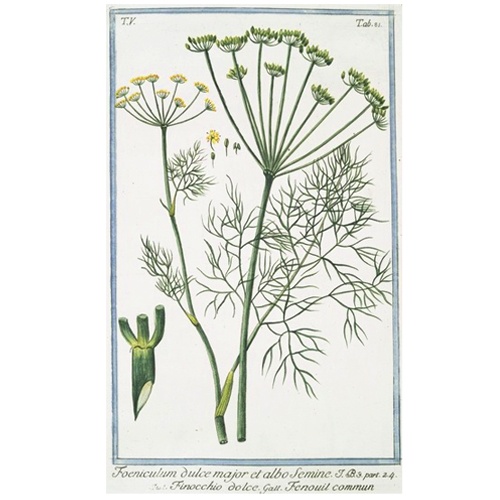


 See other articles Section
See other articles Section 